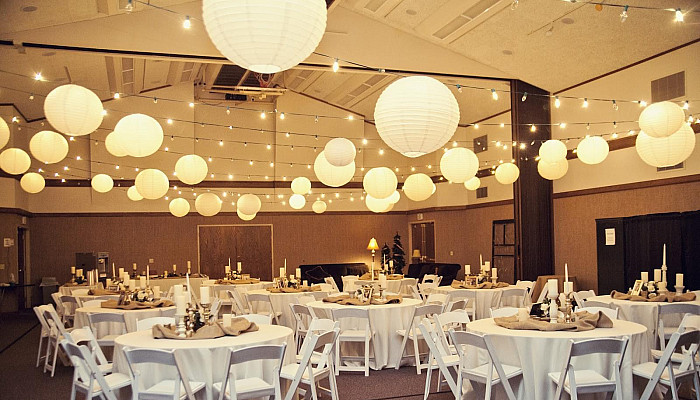Wedding Reception Ideas

Wedding Reception Trends
Wedding Reception Toasts
In most Western countries, following a meal with copious quantities of food and alcohol (traditionally paid for by the bride’s family), toasts are made by family members of the wedding party to wish the couple well in the future. Traditionally, the speaking parties include the bride’s father and the groom. In the U.S., speeches are more often given by the best man (who usually slips in a few good-natured jokes at the couple’s expense) and the maid of honor.
Wedding Reception First Dance
After the speeches, the bride and groom begin their first dance as husband and wife, which used to be called the “bridal waltz”; in most contemporary weddings a recent romantic song is played (common choices include songs by Frank Sinatra, Tony Bennett, Etta James, Dean Martin, and other standards singers) and the bride and groom’s dance is rarely an actual waltz. Different dance styles are now used, depending on the nature of the requested song.
The wedding reception dance party may involve a certain sequence of special dances. For example, after the first dance, the groom may escort his bride to her father for a special father/daughter dance.
Following the various special dances, the guests are invited to join in the dancing. The party continues with toasts and various celebrations until the bride and groom leave in a car decorated by the couple’s friends.
Other Wedding Reception Traditions
Wedding reception traditions vary considerably between countries, and even between regions of the same countries. Some wedding reception traditions include:
- The money dance or dollar dance. Guests pay a small amount of money to dance with the bride or groom. In some cultures, the money is pinned to a special apron worn by the bride or groom. In others, the money is collected by friends, who sometimes give a shot of alcohol to each guest as they pay. This tradition is common in the U.S. Midwest.
- Tossing of the bride’s bouquet and garter. The bride tosses her bouquet over her shoulder to a group of all the single women present. Whoever catches it is supposed to be the next to get married. Similarly, the groom tosses the bride’s garter to the single men, often after removing it from her leg, to the amusement of the guests. Sometimes the man who catches the garter is supposed to put it on the leg of the woman who catches the bouquet. On occasion, the bride will “rig” the bouquet toss by tossing the bouquet to a woman who is engaged. The groom then arranges for the fiancé of the bouquet toss winner to receive the bride’s garter. Sometimes the garter is sold in a raffle instead of being tossed. In most regions of the U.S., however, this is considered tacky.
- Clinking of the glasses. Guests will often clink their glasses during dinner to ask the newlyweds to stand up and kiss. Some couples pass out wedding favor bells for guests to ring instead of clinking glasses.
A New Wedding Reception Tradition
A recent wedding reception trend is the addition of a DVD slideshow or photo montage video featuring pictures of the bride and groom growing up and, eventually meeting. These are created using home movies and photos taken over the couple’s life, and edited and set to music using professional video editing software. The montage is shown either on a large TV or monitor, or an LCD projector so all of the guests can enjoy it.
This content was created by AI




